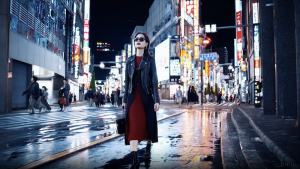 Yesterday, Open AI launched ‘Sora‘, a new text-to-video model “that can create realistic and imaginative scenes from text instructions.
Yesterday, Open AI launched ‘Sora‘, a new text-to-video model “that can create realistic and imaginative scenes from text instructions.
Here are my provisional thoughts about its impact:
Better Video Making:
Now, businesses and marketers can make high-quality videos quickly and cheaply using text. This means even small businesses or people without much money can make great videos.
Tailored Ads:
Marketers can use these tools to make hyper-targeted video ads that speak to specific groups of people, based on what they like or where they’re from. No doubt this will impact the bottom line!
Fun and Easy Storytelling:
For those making videos for fun or learning, this tech lets you create detailed stories with characters and emotions just from text. This means making interesting videos is quicker and simpler. Expect to see a feature film in the coming days/weeks, using footage entirely generated from the model. The onus is on storytelling rather than technical prowess.
Clip created by OpenAI. I do not hold the copyright. The prompt used to create “Tokyo Walk”: “A stylish woman walks down a Tokyo street filled with warm glowing neon and animated city signage. She wears a black leather jacket, a long red dress, and black boots, and carries a black purse. She wears sunglasses and red lipstick. She walks confidently and casually. The street is damp and reflective, creating a mirror effect of the colorful lights. Many pedestrians walk about.”
Testing Ideas Quickly:
Companies can use these tools to see how new products, services, or ad ideas look, and fast. The innovation process will speed up!
Online Events That Feel Real:
Businesses can make online events or tours (and quickly) that look and feel just like the real thing, giving your customers fun new ways to see what your brand is all about.
Learning and Development:
In areas like health, flying, or making things, these tools will make training videos look real. People will learn better by doing things more like they would in the real world.
Greater Reach:
Tools like this will make videos in many languages with different characters and stories. This makes it easier for people to see themselves in media and helps brands reach more people.
Saving Time and Money:
Making videos is now faster and cheaper, so businesses can use their money and time better, possibly making more money and doing more stuff.
New Ways to Watch Videos:
As these videos get better, we might see new places to watch and share them. Remember how Netflix took the throne from Blockbuster?
As always, Ethical Considerations:
As this tech gets better, people will have to think more about copyright, fake videos, and using AI the right way. Businesses and video makers must make sure they’re following the rules and being fair. Boon time for Lawyers!
OpenAI’s Sora is just the beginning of what’s possible with AI in video production. Future models will expand these capabilities. It’ll be nothing short of transformational for digital media and will open up incredible new opportunities for creativity, engagement, and innovation.
Sora might look like it’s just about making videos, but that’s missing the point. It’s really about AI understanding physics. It shows how their tech is getting good at figuring out how objects, light, and movement work together. When you mix this new capability with stuff like vision and robotics, you get something new. We’re living in incredible times. It’s all very exciting, but a bit scary too. There’s so much that could happen, and I’m both nervous and excited in equal measure.
By the way, the 20-second clip below shows the progress in Text to Video models from February 2023 to February 2024. Quite incredible!
